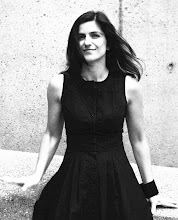Lost inTranslation?
My paper has been accepted as part of the 2013 Graduate Symposium: Lost in Translation at Wentworth Architecture on Monday January 14, 2013 at Watson Auditorium. About the symposium:
Lost in Translation?
Historically, architects have used translation as a tactic by which to explore ways of thinking about and making architecture. We have borrowed from other architectures as well as from other fields of inquiry. Examples of the former are easy to find, from Palladio to the stylistic post-modernism of the late 1970s and 1980s and much in- between. Architects have used earlier work as reference, inspiration, and certainly as sources for translation. As well, much of what is currently built is in fact existing architecture, adaptively re-used. Architects, indeed, have a history of interpreting, translating, collaging, hacking, reverse engineering, sampling, and re-using existing built work. Other models of knowledge have also served as root sources, open to translation. These include, at least; literature, as in the Danteum in Rome by Terragni and Lingeri; literary theory, for example Eisenman’s early house studies; painting such as Hejduk’s diamond houses and much of Gehry’s early work; music as in the Stretto House in Dallas by Steven Holl; natural forms in the work Calatrava, Dieste, Gaudi, and Horta; and even from modeling techniques explored in the work of Greg Lynn and other promoters of all things parametric. More recently architects are drawing formal inspiration from diverse fields such as biology, botany, philosophy, rendering techniques, fabrication strategies, and even pasta.
What is being gained, or lost, by making translations? Is architecture autonomous? Does architecture have it’s own voice? Are some strategies more effective than others? This graduate symposium sets out to explore the nature of translation, various strategies of translation, and then determine criteria by which we may judge such translations. Can a bad translation still make a good building?
Labels: architecture, theory, wit




0 Comments:
Post a Comment
<< Home